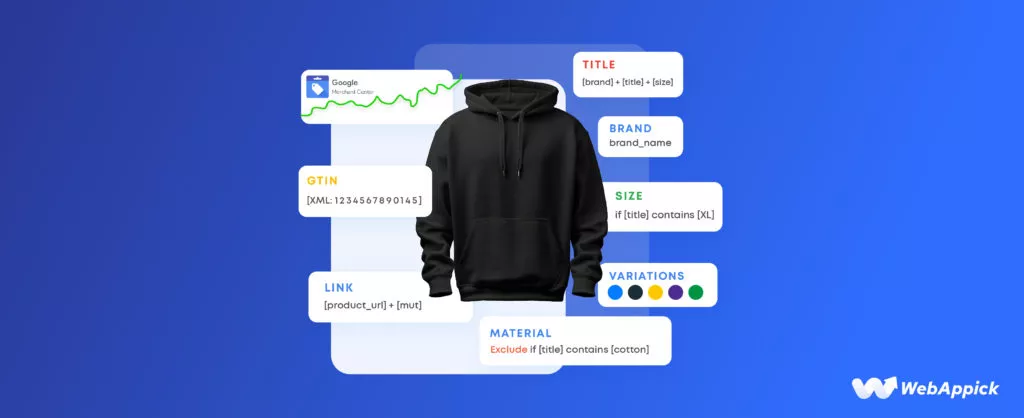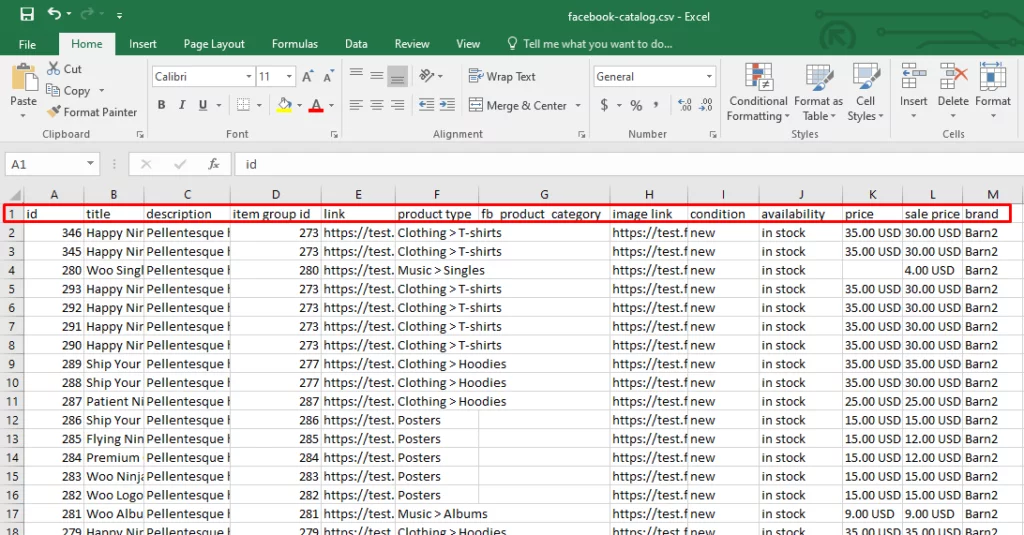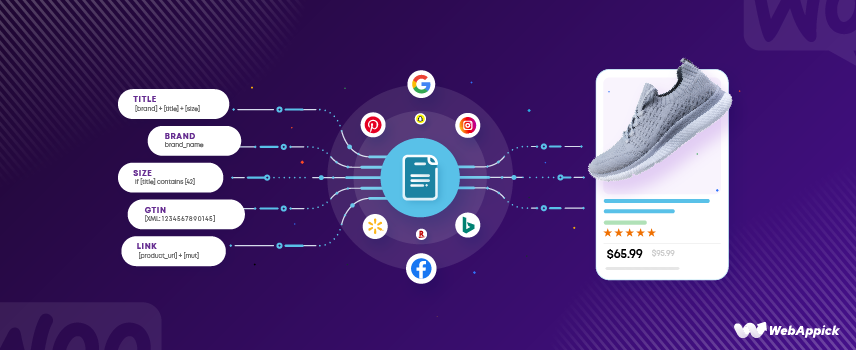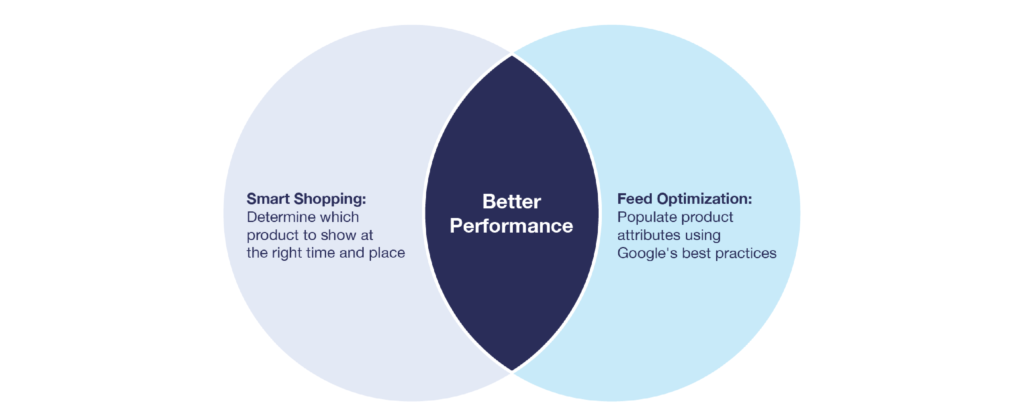
What is eCommerce Product Data Feed and Why is it So Important?
In the thriving world of online commerce, where every click counts and every detail matters, the importance of a well-organized eCommerce product data feed cannot be overstated.
It’s like the lifeblood of your online store that can help you provide the right information to the right channel, just like how blood delivers vital nutrients to the right organ of your body.
However, there are a lot of mysteries around this topic.
Many people don’t have a solid idea about what a product data feed is, how to manage product data feed the right way, and why it is so important for online businesses. As a result, many online businesses miss a lot of growth potential.
That’s what we’re discussing today!
Join us as we dive deep into the intricate world of E-Commerce product data feeds, discovering their essence and understanding their crucial role in propelling your business to success.
Without any further ado, let’s jump right into it.
So, What is an E-Commerce Product Data Feed Exactly?
In the simplest terms, A Data Feed AKA Product Data Feed or Shopping Feed is a structured file containing detailed information about your products (like descriptions, titles, prices, images, and more) formatted for easy sharing and integration across various online platforms and marketplaces.
I’m sure you know where all the product information on your website comes from, right? If you’re in the dark, let me explain. At the core of every online store, there is a database that stores all the necessary information.
In that database, all the information related to a single product is stored in a structured digital file. The file is usually called a “Product File”.
Usually, this type of product file/listing follows some specific file format like TXT, CSV, EXCEL, XML, or JSON. It’s highly unlikely that you only sell one product in your online store. In that case, you won’t need a product data feed.
However, If you sell multiple products containing hundreds of variations, manually maintaining all the data for all of your products can quickly become a nightmare; especially when you want to sell your products over multiple sales channels.
That’s where the eCommerce product data feed comes into the picture. It not only helps to organize all the information about your products but also makes it easy to distribute that information across various channels in case you want to expand your business horizon.

Wait, that’s not all!
There is a hidden superpower of product data feed that many people don’t know about. Apart from displaying products across multiple channels, it can also be used to run ads and retarget users.
Expert markers strategically use data feeds in their campaigns to gain a competitive advantage and help their product stand out from the crowd.
Want to know more? Check out how a product feed can increase sales for your online store.
What Does a Product Data Feed Look Like
If you’re familiar with Google Sheets, MS Excel (Windows), Numbers (Mac), and/or Notepad, you already have a pretty good idea about what a product data feed Looks like.
A product feed usually consists of various columns, each containing essential product information/attributes like —
- Product Name/title
- Product ID
- Product Description
- Product Catalog
- Image Link
- Color
- Size
- Price
- Gender
- Shipping and Tax Information (GTIN/MPN)
- Product Availability
And many more. If you’re still struggling, have a look at the E-Commerce product feed example given below.

The specific columns and their types depend on the requirements set by the platform you’ll be using.
So, what are the different types of data feeds?
Let’s explore:
Data feeds are basically track sheets. You can use them to track data about your product, content, users, SKUs, email subscribers, and many more.
Here are some commonly used types of data feeds across the E-Commerce landscape —
- Product Data Feed
- Content Data Feed
- Purchase Data Feed
- Promotional Data Feed
- Order Data Feed
- Customer/User/Subscriber Data Feed
- Variation(SKU) Data Feed
- Advertising Data Feed
- Social Media Data Feed
However, for the sake of relevance, we’ll limit today’s discussion to E-Commerce product data feeds only.
What Makes a Good Product Feed in E-Commerce
Now, you might be thinking, “Product data feeds are just plain information.
What’s so good or bad about it”, right?
Veteran marketers utilize a process named “Product Feed Optimization” to differentiate their products in the market, and run highly targeted ad campaigns; securing more sales while your online store struggles to grow.
Good feeds or product data feeds are usually characterized by accurate and comprehensive product information including clear titles, detailed descriptions, high-quality images, up-to-date pricing, and availability.

It should also be properly formatted and optimized for the specific requirements of the intended sales platform.
Online marketplaces like Facebook, Google Marchant Center (also known as Google Shopping), Pinterest, Amazon, Instagram, TikTok, and many more – all have their preferred data format that you’ll need to keep in mind when optimizing your feed.
The Reasons You Need Product Data Feed for Your Online Store
So, a product data feed is a database for all your product information, and there are ways to optimize this database to increase the performance of your online shop. What else?
You might be thinking that you don’t need a product data feed. Or even if you have one, what’s the point of optimizing it if you are not actively running ad campaigns, right?
The thing is, raw data can only get your online store so far! A well-tailored product feed boosts your ad ranking and quality scores, enhances customer experiences, boosts brand recognition, and reduces return rates, ultimately driving revenue and growth.

So, even if you’re not actively running any campaigns, maintaining and optimizing your product data feed is crucial for securing business growth, especially if you want to sell your products on multiple channels or marketplaces.
What’s more? your webshop’s data is dynamic, with prices fluctuating and products coming and going frequently. Managing these changes across multiple sales channels manually can be challenging!
Exporting and uploading product files each time you make a change is impractical. That’s where a product feed comes in handy! It’s accessible via a URL and allows easy updates whenever needed.
Additionally, after the COVID-19 pandemic, every business is becoming increasingly desperate to establish their online presence. As a result, we’re seeing a massive surge of people engaging in online commerce.
The US alone has seen a massive 43% jump in E-Commerce transactions in 2020, hitting $815.4 billion. Also, according to UNCTAD, Online purchases increased by around 7% because of people being stuck at home during the pandemic.

This means the competition is getting fierce with every passing day, and doing just the bare minimum isn’t going to cut it anymore, especially when it comes to data management.
This is where E-Commerce product feed optimization can help you secure a competitive edge. Aside from being more visible against the competition, it can also help you increase your ROI (Return On Investment), streamline your inventory management, and maximize profitability.
In a nutshell, an optimized product data feed will help you to –
- Improve your visibility across multiple sales channels
- Optimize a seamless customer experience
- Keep your inventory organized, streamlined, and accurate
- Improve search engine rankings for your products
- Boost your conversion rate and customer loyalty
- Run targeted advertising and remarketing campaigns
- Improve your ad metrics (ROI, CPC, CPA, etc.)
- Secure a competitive advantage in the dynamic E-Commerce landscape
From enhancing visibility across multiple sales channels to optimizing customer experiences, improving conversion rates, and driving revenue, the potential of effective product data feed management is practically limitless.
How do you Manage Product Data Feed?
So, it’s clear that you need a product data feed to optimize your chances. But how do you manage your product data feed for the optimum result?
The answer is that you’ll need to opt-in for a process named product data feed Management. This process involves —
- Collecting all the necessary information about your product
- Regularly updating and optimizing product information/attributes
- Integrating with third-party tools for enhanced functionality
- Performing Quality Assurance (QA) tests to verify that the product feed is error-free
- Ensuring accuracy and consistency across various sales channels
- Monitoring performance metrics and adjusting strategies accordingly
Whoa! That’s a lot of technical mambo jambo, right?
Relax; though it may seem intimidating, it’s not that complicated!
We have crafted a series of guides to help online shop owners like you optimize product feeds for all those different sales channels. Feel free to go through our blog and documentation section to get a clear idea about what to do, and the best way to do it.
Best Practices for Optimizing Product Data Feed
The best product data feed management technique will depend on your targeted sales/shopping channel. As I mentioned earlier, every platform has its unique set of requirements when it comes to product data.
Anyway, for those who want a more general idea, here are some pro tips you can follow to make sure your E-Commerce product data feed optimization game is always on top.
So, here goes,
- Ensure all information is correct, up-to-date, and consistent across your entire feed
- Fill out all required attributes and follow the recommended specifications for every specific sales channel
- Maintain consistent formatting throughout the feed using clear, concise, and descriptive language
- Optimize your product titles for relevant keywords and search queries
- Don’t forget to highlight key features and benefits
- Use high-quality, professional images with consistent backgrounds and zoom options
- Optimize image file size for fast loading
- Clearly showcase product availability and expected delivery times
- Use the appropriate promotion tags and attributes
- Don’t forget to validate your feed before submitting it to any channel
- Use feed management tools (Like CTX Feed and Feeditor) to automate/optimize your feed submissions and save time/effort
- Run A/B tests to validate different approaches and optimize based on results
- Track and analyze your data to identify areas for improvement
Over to You
And that’s about it for today. Through this guide, we’ve tried to give you a brief introduction to E-Commerce product feed management and why it’s so important for online businesses.
Remember, accurate and optimized product data feeds can be the difference between struggling and thriving in the competitive world of E-Commerce.
We understand the challenges of managing product data feeds, especially for growing online businesses. That’s why we’re here! We’ll help you manage your product data feed effortlessly across all of your sales channels.
Whether you’re just starting or looking to refine your existing strategies, we’re here to guide you every step of the way.
Curious about the hidden secrets of successful online stores? Stay tuned for our next blog post where we’ll dive into the fascinating world of E-Commerce optimization and reveal how you can boost your conversion rate.
Click the button below to read more about how you can optimize your E-Commerce store for the best results.
Read More
- How to Generate Facebook Product Feed in WooCommerce
- How to Generate Google Shopping Data Feed for WooCommerce Store
- Google Shopping Free Listings: A Step-by-Step Guide for WooCommerce Retailers
- 23 Google Shopping Product Feed Optimization Tips
- How to Generate Google Local Inventory Feed on WooCommerce
Thank you for reading this far. Hope this guide proves to be helpful. We’ll see you guys on another blog post. Till then, take care. Here’s to your E-Commerce success!
